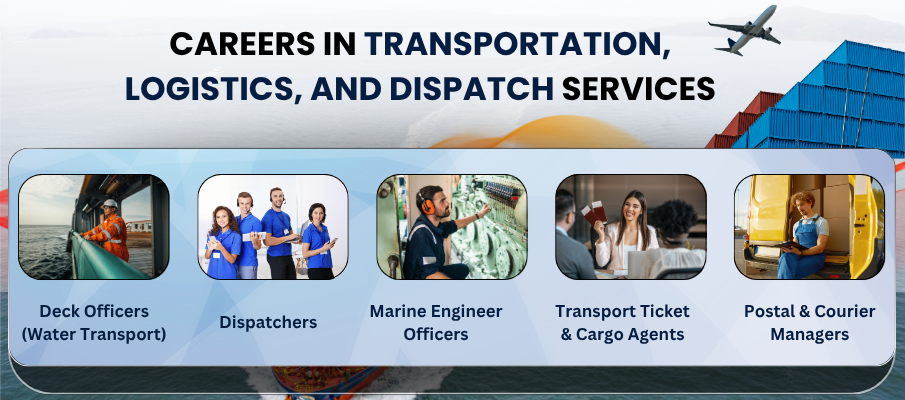
If you’ve ever received a package on time, seen fresh fruits in a supermarket from across the country, or watched a factory hum with activity, chances are you’ve witnessed the quiet efficiency of logistics. But what exactly is logistics? It’s a word that often pops up in business talks, job searches, and even daily conversations, but not everyone understands its full scope.
Let’s break it down—honestly and in a way that connects with what we see around us.
What is Logistics?
Logistics is the art and science of efficiently and effectively moving goods from one place to another. It involves everything from planning and managing how raw materials reach factories to how finished products end up in your local Kirana store or on your doorstep.
In simpler words, logistics ensures that the right product reaches the right place, at the right time, in the right condition, and at the correct cost.
Now imagine this: a mobile phone you ordered online gets dispatched from a warehouse in Bengaluru. It travels by road to a distribution hub in Mumbai, then by air to your city, and finally, a delivery executive brings it to your house. That whole journey? That’s logistics in action.
What Happens in the World of Logistics?
Logistics isn’t just about trucks and warehouses. It’s a network of different activities, all working together behind the scenes. Here are the major components:
- Transportation: This is the most visible part—trucks, ships, trains, and planes. It’s about choosing the fastest, cheapest, or most reliable way to move goods.
- Warehousing: Goods are stored safely in large warehouses before they are needed. Whether it’s Amazon’s fulfilment centre or a cold storage for fruits, warehousing is key.
- Inventory Management: Companies need to track what’s in stock, what’s running low, and what needs to be reordered. Too much inventory wastes money; too little leads to shortages.
- Packaging and Handling: Products must be packed properly for safety and ease of transport. Think bubble wraps, crates, pallets, etc.
- Order Fulfilment: The process of receiving, processing, and delivering customer orders.
- Supply Chain Coordination: Logistics is often part of a larger supply chain. Coordinating with suppliers, manufacturers, retailers, and customers is essential.
From Where Does All This Happen?
Logistics is happening everywhere in India—from rural villages to bustling metros. Major logistics hubs include:
- Mumbai, Delhi, Chennai, Kolkata: These metro cities serve as critical centres due to ports, railways, and road connectivity.
- Ahmedabad and Surat: Important for textiles and industrial goods.
- Bengaluru and Hyderabad: Tech-driven logistics with a focus on e-commerce.
- Punjab and Haryana: Major agricultural logistics zones.
India’s National Logistics Policy, launched in recent years, is also boosting infrastructure and reducing the cost of logistics, from building better highways to developing multi-modal transport systems (rail, road, air, and sea together).
What Kind of Jobs Are There in Logistics?
Here’s the exciting part: logistics is one of the fastest-growing job sectors in India, especially with the rise of e-commerce and digital India initiatives.
Whether you’re a fresh graduate, a diploma holder, or even someone with hands-on experience, there’s something for everyone. Some key roles include:
| Careers | Eligibility |
|---|---|
| Deck officers, water transport | Diploma/Certificate |
| Dispatchers | High School |
| Engineer officers, water transport | Diploma/Certificate |
| Ground and water transport ticket agents, cargo service representatives and related clerks | High School |
| Postal and courier services managers | Bachelor's Degree |
| Production logistics co-ordinators | Bachelor's Degree |
| Supervisors, supply chain, tracking and scheduling co-ordination occupations |
Where Can You Learn and Start?
There are many ways to step into logistics, depending on your background:
- ITI/Diploma Courses: Many polytechnic institutes offer logistics-related diploma courses for those who’ve completed 10th or 12th.
- Graduate Programs: BBA or B.Com focusing on supply chain or logistics is available in several colleges across India.
- Online Certifications: Platforms like Coursera, Skill India, and Udemy offer professional logistics and supply chain management courses.
- MBA in Logistics & Supply Chain: Many top business schools offer this specialized MBA for those looking to move into managerial roles.
- Skill Development Programs: Under the Skill India mission, short-term training in logistics and e-commerce is also available, often free or at low cost.
Why Should You Consider a Career in Logistics?
- Stability and Growth: As long as goods need to move, logistics will be in demand.
- Diverse Opportunities: From entry-level jobs to leadership positions, there’s a role for everyone.
- Digital Innovation: The sector is modernizing rapidly, including GPS tracking, drone deliveries, and AI route planning.
- Job Satisfaction: Logistics professionals often feel accomplished when everything runs smoothly.
A Sector That Touches Every Life
The next time you see a delivery van, a packed warehouse, or even a parcel at your doorstep, remember there’s a massive network of hardworking individuals and smart systems behind it. Logistics might be behind the scenes, but it keeps the world moving.
And in India, with our vast geography and booming economy, logistics is more important than ever. Whether you’re looking for a job, thinking about a career switch, or just curious about how things work, logistics is worth exploring.



